The History Of The Blue Heron Bridge And Phil Foster Park
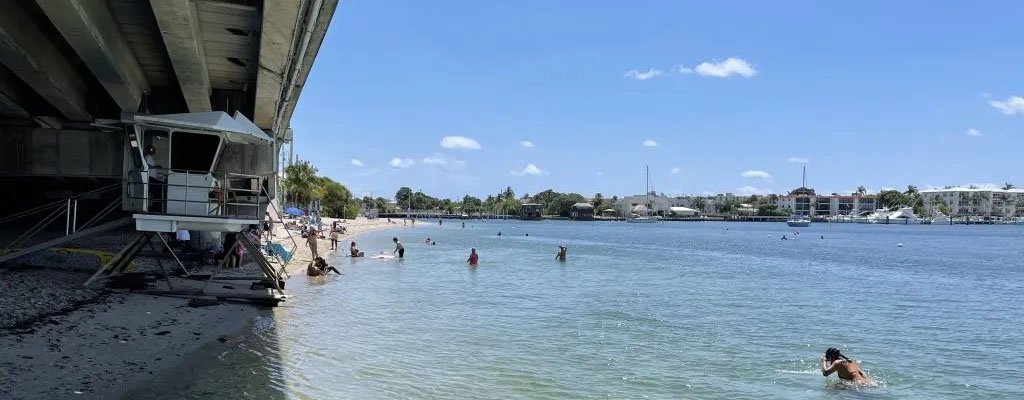
Nestled in the heart of Riviera Beach, Florida lies a breathtaking community space that has captured the hearts of locals and visitors alike – Blue Heron Bridge at Phil Foster Park. But this park is more than just a picturesque spot, it has played a crucial role in the development of the area over the years.
Who Was Phil Foster
Named after Phil Foster, a former mayor of Riviera Beach, the park is a tribute to his unwavering commitment to creating a better quality of life for the city’s residents. Foster was not just an ordinary politician, he was a visionary. He believed that the key to a thriving community lay in the development of parks and recreational areas, and he worked tirelessly to bring his vision to life.
Born in the bustling city of New York in 1914, Foster made his way to Riviera Beach in the 1950s. He quickly immersed himself in local politics and served as a city councilman before becoming the mayor in 1971. It was during his tenure as mayor that he left an indelible mark on the city.
With his passion for creating community spaces, Foster saw the potential in the land that is now Phil Foster Park. He pushed for its development, rallying support from both the government and the community. Through his tireless efforts, he secured funding and resources to make the park a reality.
Today, Phil Foster Park stands as a testament to Foster’s unwavering dedication to creating a better life for his community. It’s a space where families can come together, children can play and people can connect with nature. As you stroll through its lush greenery, take a moment to reflect on the legacy of Phil Foster, and the impact he had on this beautiful park and the city he loved.
Origins of Phil Foster Park
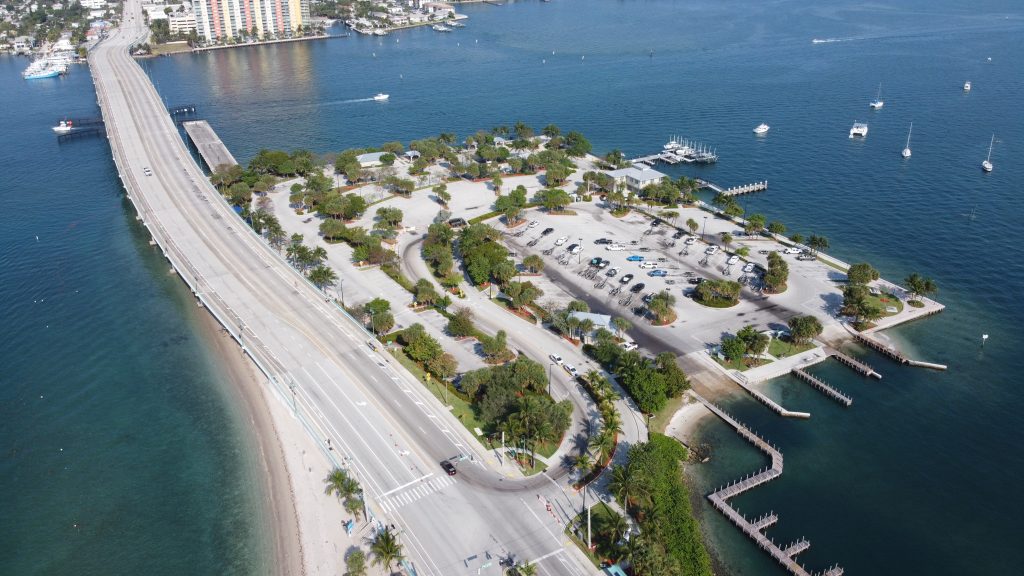
The park was eventually developed in the early 1980s and has since undergone several renovations and expansions. In 1998, the park was expanded to include a snorkeling trail, which is now one of the main attractions of the park. The snorkeling trail features artificial reefs that have been created using discarded concrete pipes and other materials. The reefs attract a wide variety of marine life, including tropical fish, sea turtles, and even the occasional octopus.
Phil Foster Park also features a beach, picnic areas, a playground, and a boat ramp, making it a popular destination for locals and tourists alike. The park is known for its beautiful views of the Intracoastal Waterway and nearby Peanut Island. It is a beloved community space that has played an important role in the development of Riviera Beach over the years.
Blue Heron Boulevard
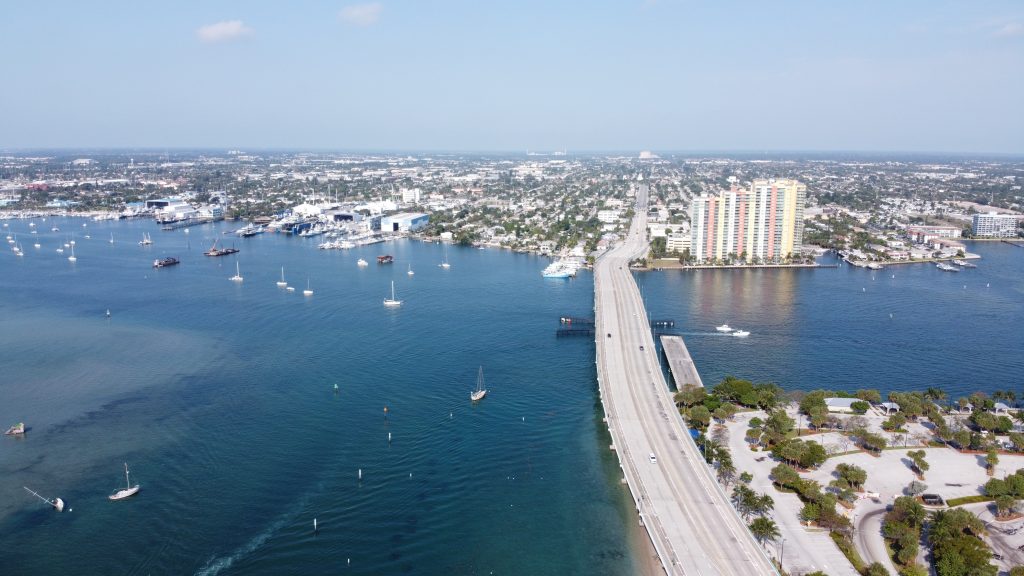
The name “Blue Heron” Blvd. in Riviera Beach comes from the Blue Heron Motor Lodge, which was a popular hotel and restaurant that was located in the area in the mid-20th century. The hotel was known for its distinctive blue heron statue, which stood at the entrance and became a local landmark. When the city of Riviera Beach expanded its road network in the 1960s and 1970s, it chose to name a new boulevard after the Blue Heron Motor Lodge as a way to pay tribute to the hotel’s importance in the area’s history and development.
The Blue Heron Motor Lodge was founded by Richard G. Salsbury, a successful businessman, and real estate developer who saw the potential for growth and development in the Riviera Beach area. Salsbury purchased a large tract of land in the area and built the Blue Heron Motor Lodge as a luxury hotel and restaurant that catered to both tourists and local residents. The hotel quickly became a popular destination, known for its comfortable accommodations, fine dining, and beautiful waterfront location.
Over the years, the Blue Heron Motor Lodge hosted many notable guests, including celebrities, politicians, and business leaders. The hotel was also an important community hub, hosting events and meetings for local organizations and serving as a gathering place for residents and visitors alike. While the Blue Heron Motor Lodge is no longer in operation, its legacy lives on through the name of Blue Heron Blvd. and as a reminder of the important role that tourism and hospitality have played in the history of the city.
The Blue Heron Bridge
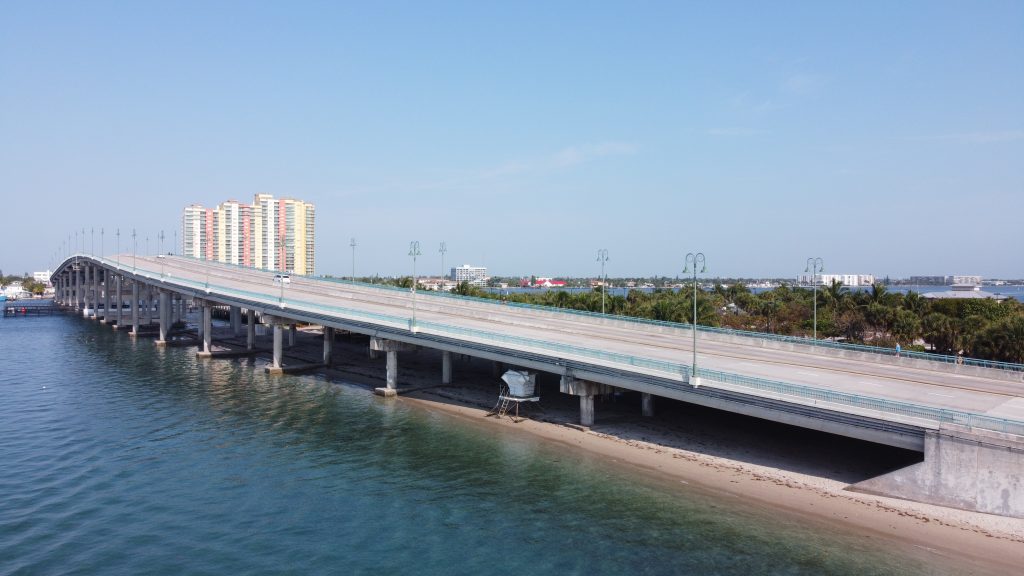
The original Blue Heron Bridge was built in 1929 as a wooden toll bridge to connect the mainland of West Palm Beach to Singer Island. It was built by oil magnate and real estate developer Paris Singer, the son of the founder of the Singer Sewing Machine Company, who had purchased Singer Island in 1920 and sought to develop it as a luxury resort destination. The bridge became an important transportation link for residents and visitors to the island.
The original wooden bridge was replaced in 1947 with a steel drawbridge, which was later replaced in 1988 with the current concrete bridge. The steel drawbridge was built to accommodate the increasing traffic in the area and to improve transportation between Singer Island and the mainland. The current concrete bridge was built to improve the safety and efficiency of the bridge and to provide better access for boaters in the area.
The current bridge is named the Jerry Thomas Memorial Bridge. It was named after locally born President of the Florida Senate, and Undersecretary of the Treasury, Jerry Thomas. Mr Thomas founded the First Marine Bank that stood at the corner of Blue Heron Blvd and US1.
Fun Fact
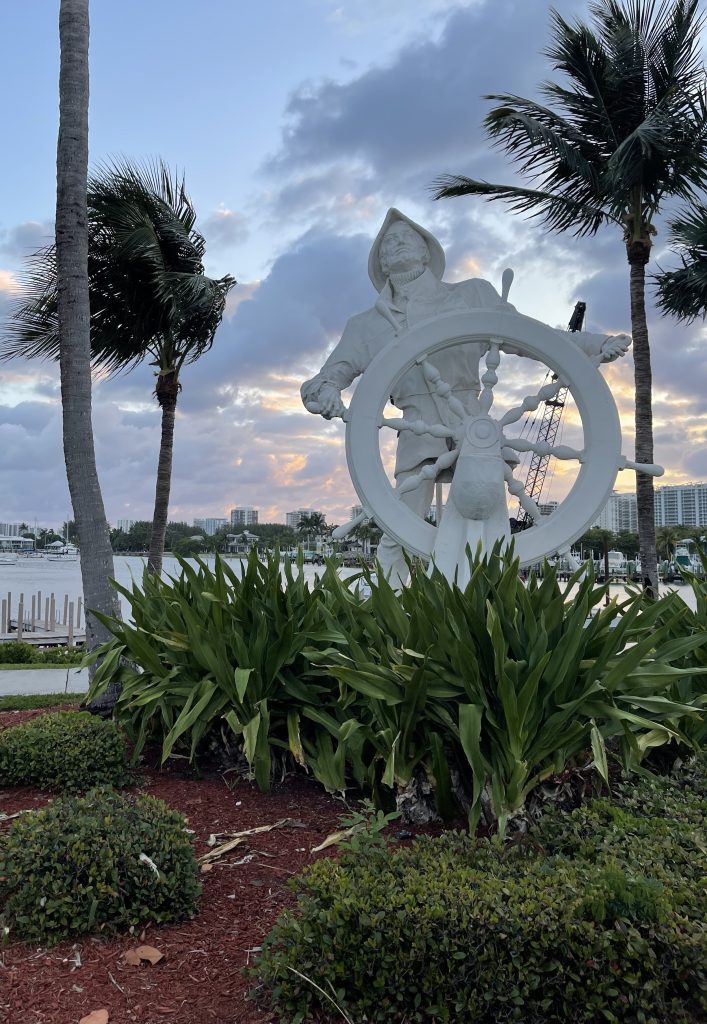
There is a statue of a sailor in Phil Foster Park called “The Ancient Mariner,” but it has no connection to Phil Foster. The statue was a corporate decoration at the First Marine Bank. Barnett Bank acquired First Marine and the statue was moved to the foot of the Jerry Thomas bridge soon thereafter.
The fishing pier in Phil Foster Park is a remnant of the old bridge before the larger current bridge was built in 1974. The pier is a popular spot for fishing and offers great views of the water.
Scuba Diving at the Blue Heron Bridge
If you are planning on scuba diving at the Blue Heron Bridge, we have some additional resources for you.
- A New Scuba Divers Guide To Diving The Blue Heron Bridge
- Blue Heron Bridge Tide Tables
- Dive The Blue Heron Bridge With Uncle Cal
Additionally, you might be interested in these articles